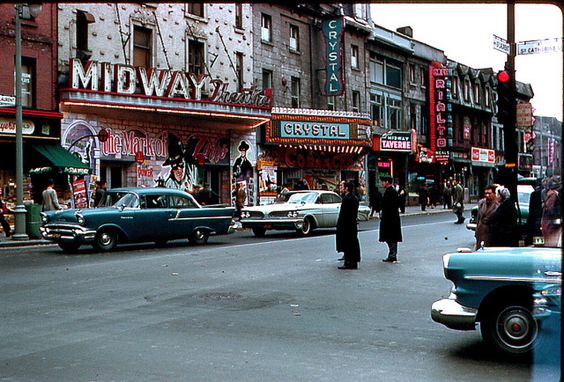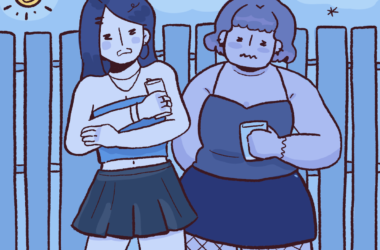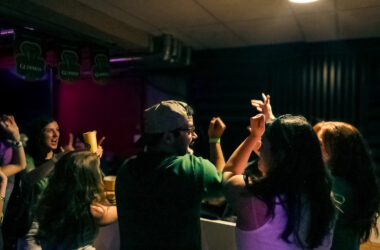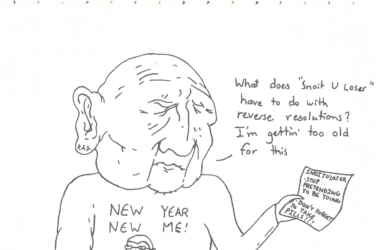Every few days, Instagram account Montreal Then and Now posts historical photographs of the city––sometimes recognizable intersections and buildings, other times obscure corners or neighbourhoods. Swipe to the left, and you’ll see a present day snapshot of these settings at the same angle, all taken by Elijah Herron, creator of the project.
Herron made his first post in 2018, when he was working toward his degree in Urban Planning at Concordia. Having access to a breadth of historical maps and photos while in school, he was curious to see the changes and preservations made to the urban fabric of the present day.
A series of pictures show the transformation of The Empress Theatre from its heyday in the 1920s, an Egyptian Revival style theatre that has sat empty in the Notre-Dame-de-Grâce area for two decades. Another reveals the predecessor to a popular buffet restaurant in Chinatown to have been a cabaret.
Herron’s photo sets sometimes feature historical landmarks, like the site of the 1986 Canadiens Stanley Cup Riot, or the apocalyptic 1884 snapshot of massive ice-jams intruding upon Old Port. Many of his posts reveal the effects of displacement and gentrification in a neighbourhood; lively streets once occupied by independent businesses are transformed to emptier sidewalks and corporate storefronts, and many architectural and cultural heritage sites are lost to larger commercial ventures and infrastructures.
The contrast between images is often drastic. In the comment sections, followers of the account fill Herron’s phone with waves of nostalgia for the city’s past landscape. Under a photo comparison of Théâtre Outremont, one commenter writes, “Wonder how long before some developer turns this into condos.” Another user expresses a sentiment echoed across many posts: “Sometimes you’ve really just got to admit…this city has grown uglier.” Although Herron relates to his followers, he’s wary of too much pessimism.
“I do feel nostalgia to a certain extent but I am careful not to romanticize the past too much,” Herron wrote to The McGill Tribune. “I like to remember that [the drastic changes] are part of a long process of little changes.”
Despite the sense of extreme and rapid loss triggered by his posts, Herron reminds residents that they have the ability to influence the present and long-term changes of their neighbourhood, or city.
“Being involved in the life of a city is more than just being upset when you see change, and there are varying ways to influence the future,” Herron wrote. “Voting, petitioning for preservation and heritage status, going to local meetings, seeing what is happening in your neighbourhood directly!”
In Montreal, local housing committees and tenants’ associations advocate for residents’ rights and community-oriented urban planning. In the 1970s, The Milton-Park Citizens’ Committee created a non-profit, co-operative housing project to oppose the destruction of their community by a real-estate company. Or, take The Chinatown Working Group, which formed in 2019 to preserve the architectural and cultural heritage of the neighbourhood.
Herron hopes that the Montreal Then and Now project will make people more aware of the transforming urban terrain around them. As a generally nomadic population, students can be especially disconnected from a neighbourhood’s historical context and the effects of their own presence.
“I like to think people are feeling a connection to the city as a living thing that changes over time, sometimes for the better, sometimes for worse,” Herron wrote. “Being caught up in our lives and becoming used to our surroundings, I think [the project] can give you an opportunity to just stop and reflect on what has been happening around us.”
Even before starting the project, Herron loved to take walks through different neighbourhoods in Montreal. After spending so much time with the archives of the city’s past geography, the different historical layers of the city feel all the more intimate.
“Before doing a lot of research, cities can seem like a monolith or somewhat inaccessible,” Herron wrote. “Through the constant work of this page everywhere you start noticing historical consistencies as well as seeing locations having a historical life.”








